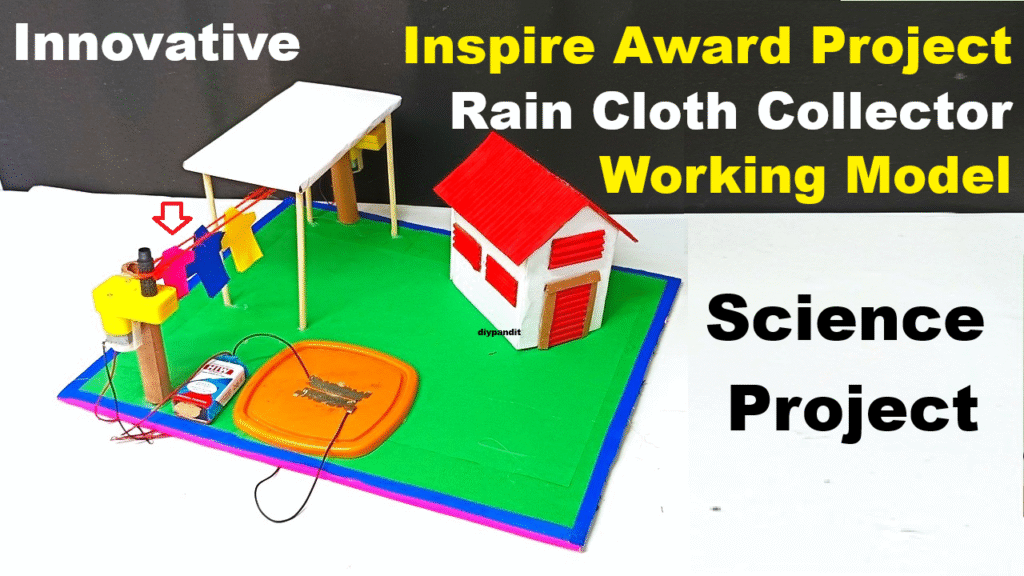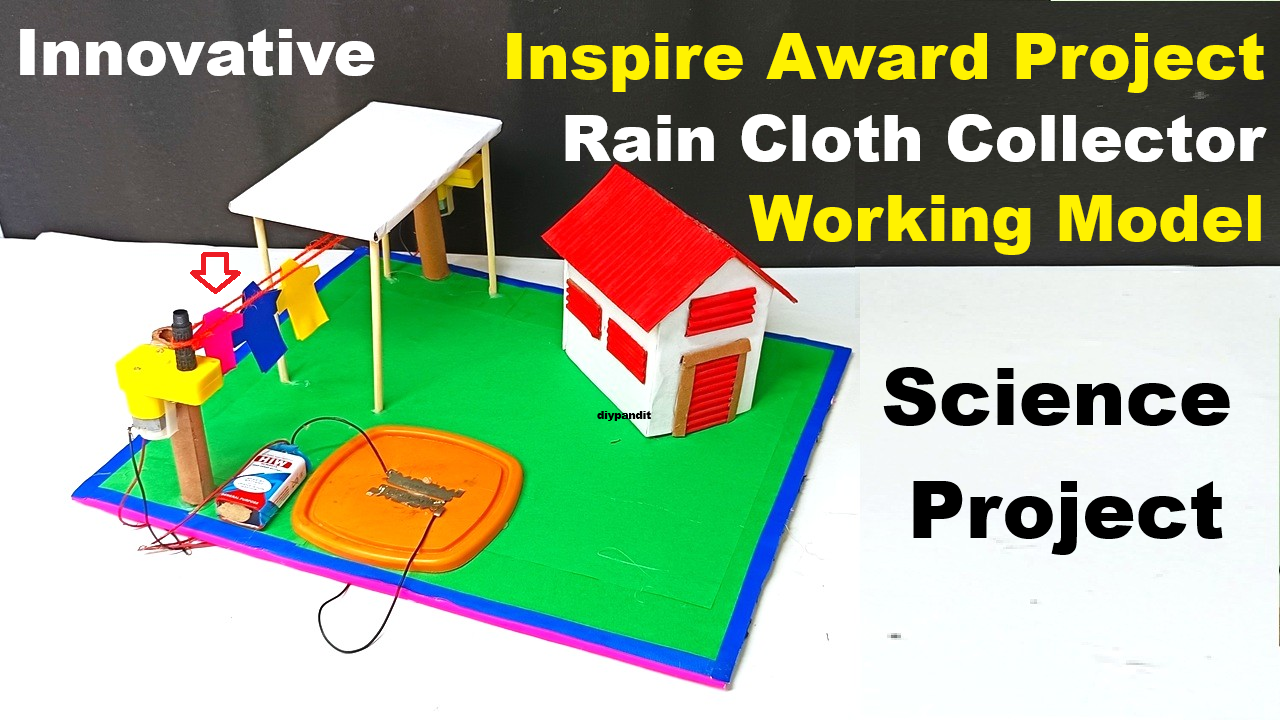Introduction
During rainfall, clothes left outside often get wet, leading to inconvenience and wastage of time. A Rain Alarm Working Model helps detect rain and automatically moves the cloth or shade to prevent it from getting wet. This project combines mechanical motion, sensors, and electrical circuits to create a practical, low-cost, and interactive solution, making it ideal for the Inspire Award.

Objective
- To automatically detect rainfall using a sensor or mechanical switch.
- To move a cloth or shade away from the rain using motors.
- To provide a practical demonstration of automation and sensor-based control.
- To make an innovative, low-cost, DIY model for science exhibitions.
Materials Required
- Cardboard or thermocol sheet – base and frame.
- Small electric motor or robo motor – to rotate or move the cloth/shade.
- Plastic or cardboard blades – acting as mechanical rain sensors.
- 9V battery with connector – to power the motor.
- Switches or mechanical rain detectors – simulate rain detection.
- Wires, glue, tape, scissors – for assembly.
- Miniature cloth/shade – to demonstrate movement.
Video Construction Steps
- Base Setup
- Prepare a sturdy base using cardboard or thermocol.
- Fix the motor securely on the base to control the cloth/shade.
- Rain Detection Mechanism
- Attach blades or lightweight strips that act as switches.
- These blades move when “rain” (simulated using water droplets) touches them.
- The movement of the blade closes the electrical circuit to activate the motor.
- Motor and Cloth Mechanism
- Connect the motor to the 9V battery through the blade-switch system.
- Fix the cloth/shade to a rod connected with the motor.
- When the motor is powered, it rotates or pulls the cloth out of the rain path.
- Demonstration Setup
- Use a small container or syringe to simulate raindrops falling on the blades.
- The motor rotates the shade instantly, showing automatic cloth protection.
Working Principle
- Blades act as rain sensors.
- Motor activation moves the cloth/shade when rain is detected.
- Circuit completion ensures energy efficiency: the motor runs only when needed.
- Demonstrates automation, sensor response, and mechanical motion.
Conclusion
This Rain Alarm Working Model is a practical solution to everyday problems and perfect for the Inspire Award. It combines mechanical, electrical, and sensor concepts to protect cloth from getting wet. The project highlights automation, innovation, and environmental awareness, making it a standout for science exhibitions.

